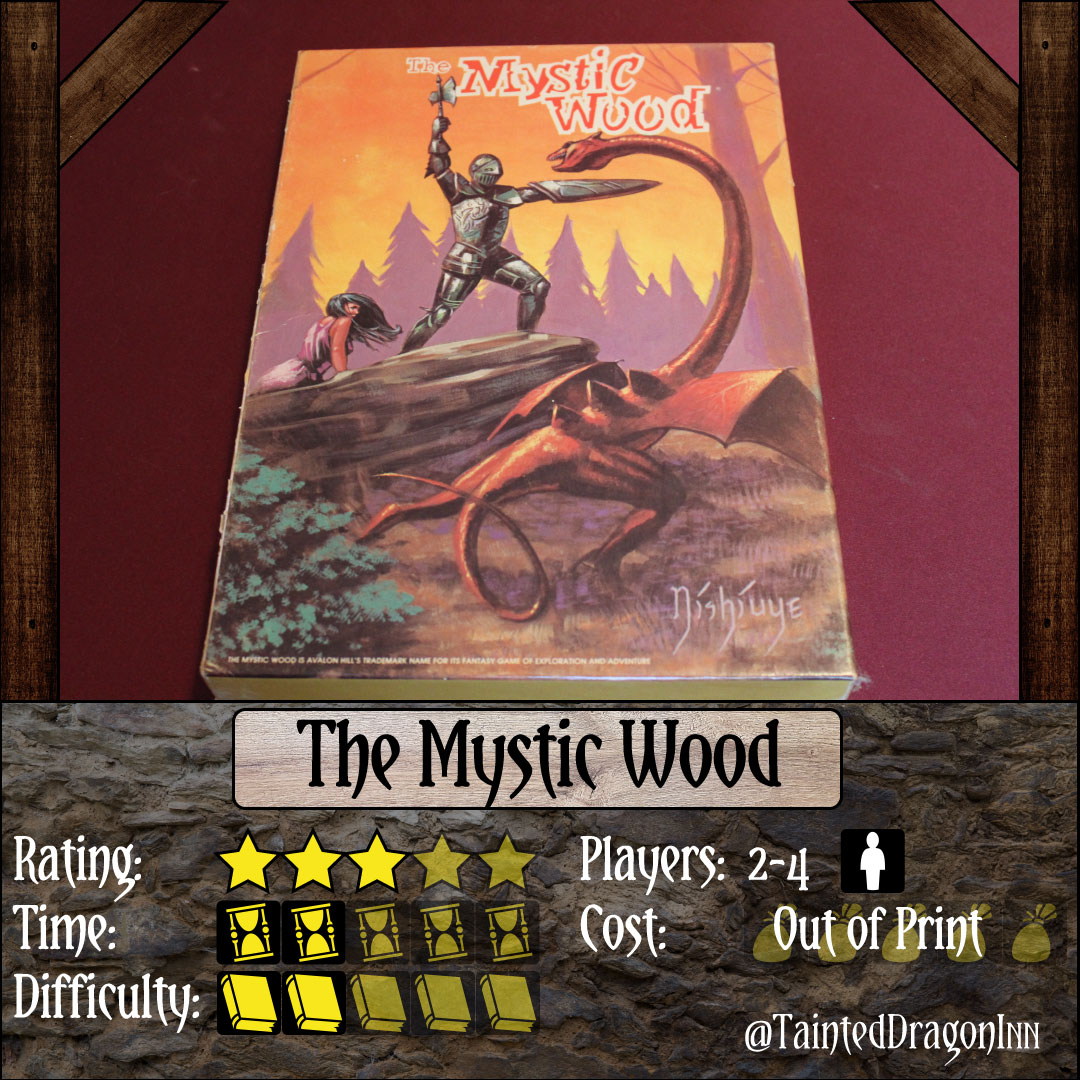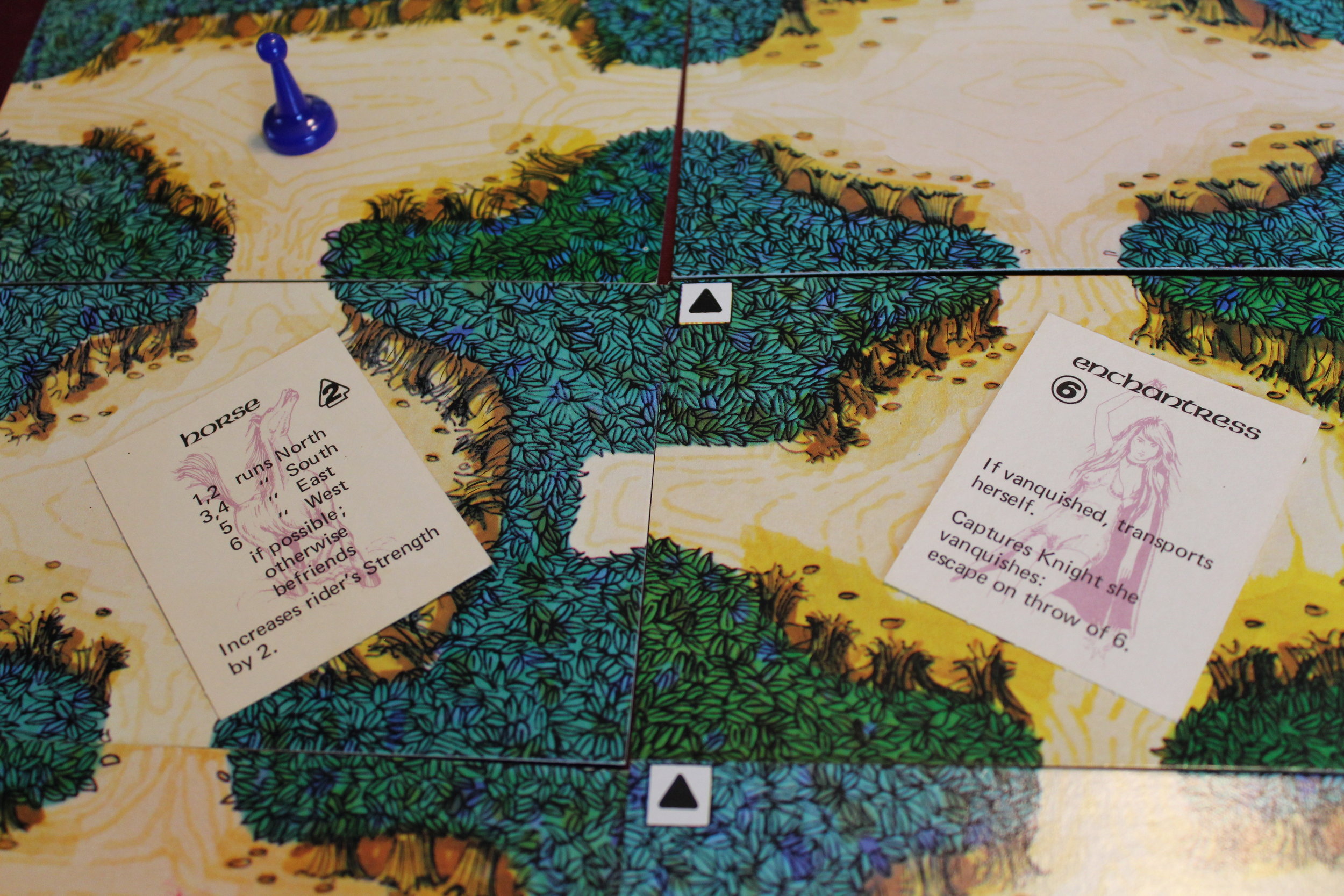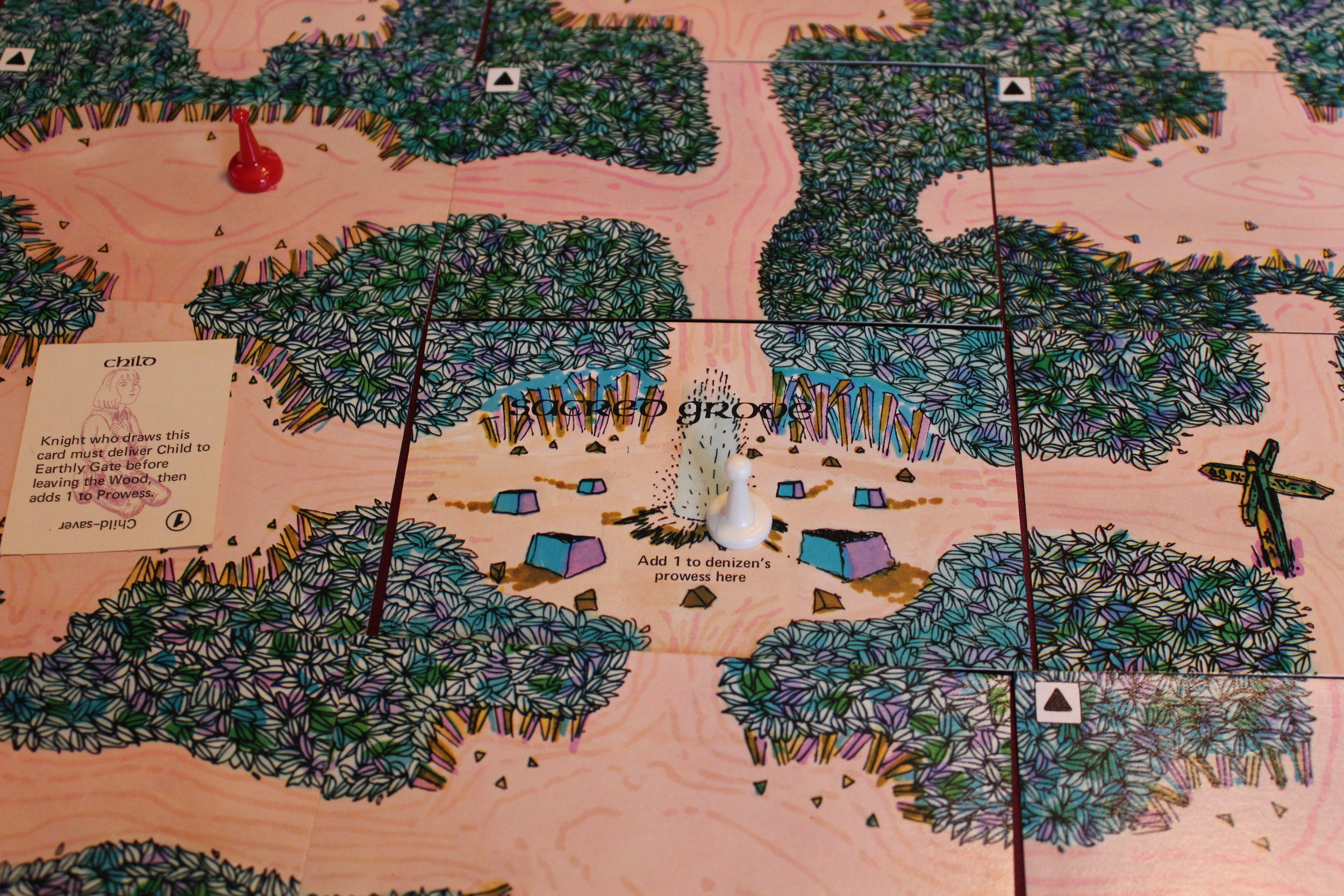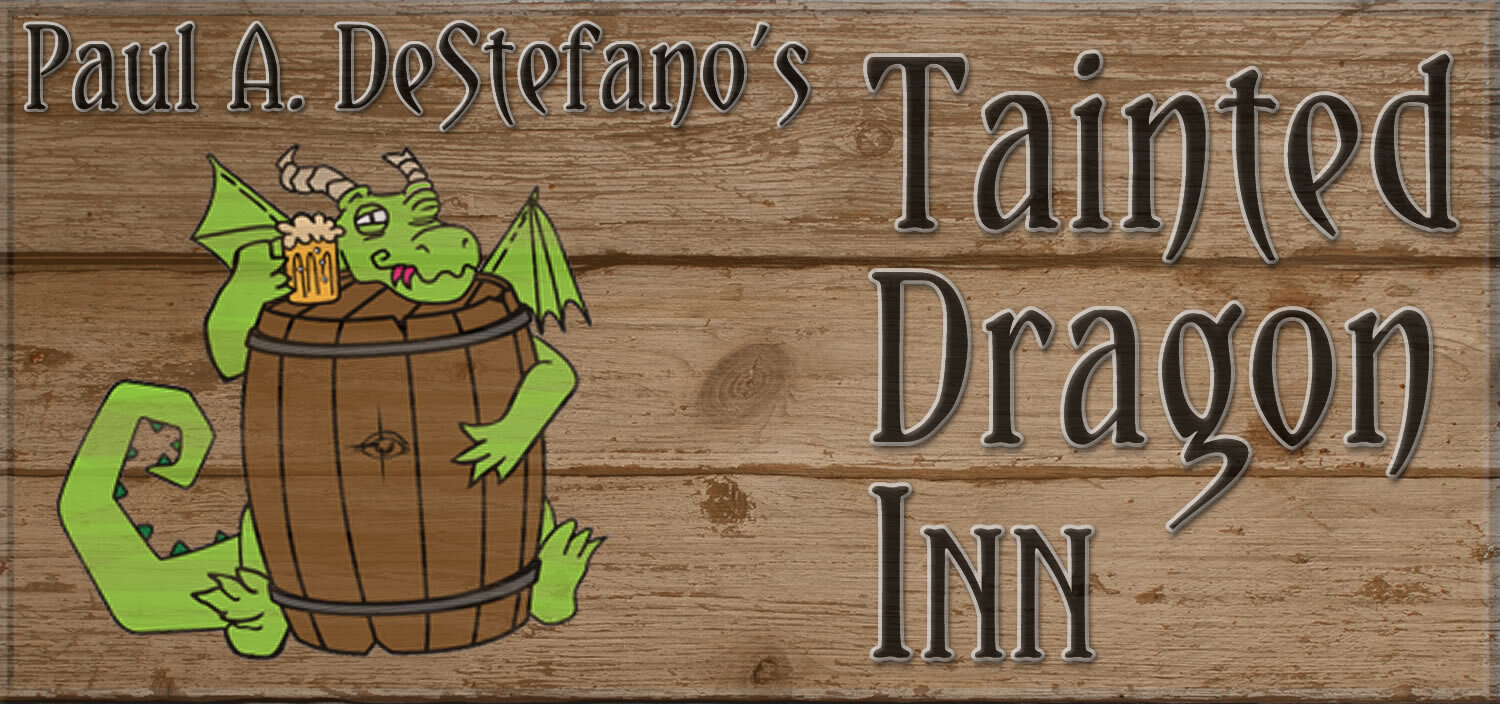The Mystic Wood
/


I have no doubt that the prototype of Mystic Wood was created with a pack of index cards. The oversized map cards appear to be postcards in the production model. Full color on one side, blank on the other, even though it would probably have served the game better to have some mark on the back denoting card type. It also would have been better if they were a bit smaller
The 'adventure deck' was perfed and had to be punched by the user. One side in green line art with the Mystic Wood logo, the other side with purple line art of uneven and somewhat dubious quality.
Mystic Wood is an archetypical adventure game. It would be difficult indeed to find a game of this genre 30 years later that doesn't borrow heavily from Mystic Wood. Even if the present designers never played or even heard of Mystic Wood - this is an adventure game stripped down to the bare essentials.
The die is a standard and extraordinarily boring D6. No fancy pearlescent, no strange symbols, no shape beyond a simple cube.
The pawns are similar to those found in a game of Sorry, only of a much, much lower quality.
It looks and feels like a self published game. And yet this was by Avalon Hill.
Each player controls a character with three notable stats. One is their victory condition. These are woefully unbalanced. However, in a game where luck is as much a player as any of the humans, this really isn't much of a concern. Each character also has 2 numbers, which boil down to the most primitive form of character stats possible. One is essentially Combat Strength and the other is pretty much Everything Else and referred to by the nebulous word "Prowess".
Play is simplistic. Move a pawn and flip over the card you just 'explored' revealing a piece of the Mystic Wood - either a clearing or a ... well, really it's a corridor. Never mind that forests don't have corridors - deal with it. There's a it of fluff color in that half the board is "enchanted" and half is not, but it has no use in play at all, other than denoting a dividing line in the board used for certain cards. You flip over an Adventure card and find anything from a quest object to a friend to a minor monster to a huge dragon.
You roll the die and add your modifiers - you have a 2 strength, a 1 point helmet and a 3 on the die is 6. The enemy had a 1 strength and rolled a 2 for a total of 3, you win. Take that card and rotate it so you gain some experience (like an additional point of Prowess, even though you used strength to beat it) and get some interesting title like "Boar Slayer".
Continue until you complete your victory condition.
Is it simplistic? Yes.
Is it unbalanced? Yes.
Is it random? Yes.
Is it fun? If the above three statements do not bother you, yes.
Will you find elements of this game carried through and polished to better effect in other games like Talisman, Runebound, Descent, Dungeon Quest, Return Of The Heroes, Dungeoneer and pretty much anything else that might be termed a Dungeon Crawl or Adventure game?
Without a doubt.
This is the base of the adventure game. The fat and fluff, the chrome and fiddly is stripped away to reveal this skeletal distillation of all things adventure game. There is no tactical combat and absolutely minimal choices to make during play. You can attack other players to set them back, but death is little more than an annoyance in this game, and a speed bump on the way to victory.
The game does have some undefinable simplistic charm to it, chromeless as it may be. There are a thousand ways to improve it. And those improvements are out there on the market today with better mapping, better components, better balance, more character control, less randomness... Pretty much everything has been done better by now.
But for a raw, no frills adventure game with a very short play time (never up to an hour), if you don't mind the lack of polish, here it is. The most stripped down adventure game of all time.
I'm sure Mystic Wood borrowed from prior games. Indeed, the same designer had previously released Sorcerer's Cave which is a similar game underground, but that had additional unneeded elements like levels in a dungeon and item weight. Mystic wood strips the formula further.
Again, it may not have been the first. But it is the most base.
Plato went through great lengths trying to define the essence of an object - like what makes a table a table. What is "Tableness"...
Mystic Wood is the essence of the modern Adventure Game, the protoplasm which all others have come from. And it deserves to played for that if not the quick fun it provides.
TLDR: Old School Adventure gaming done right


